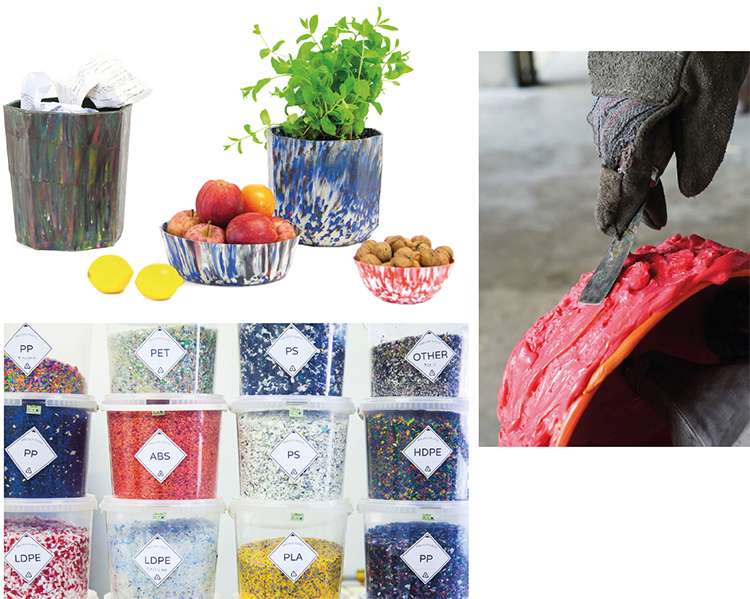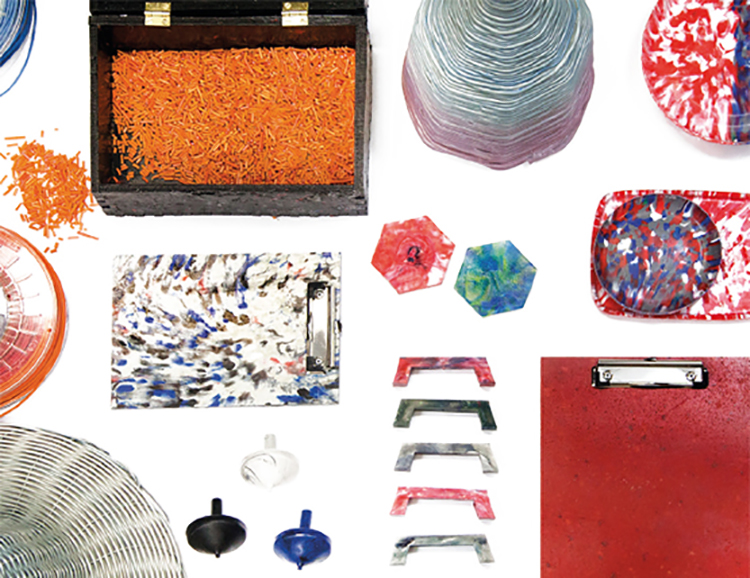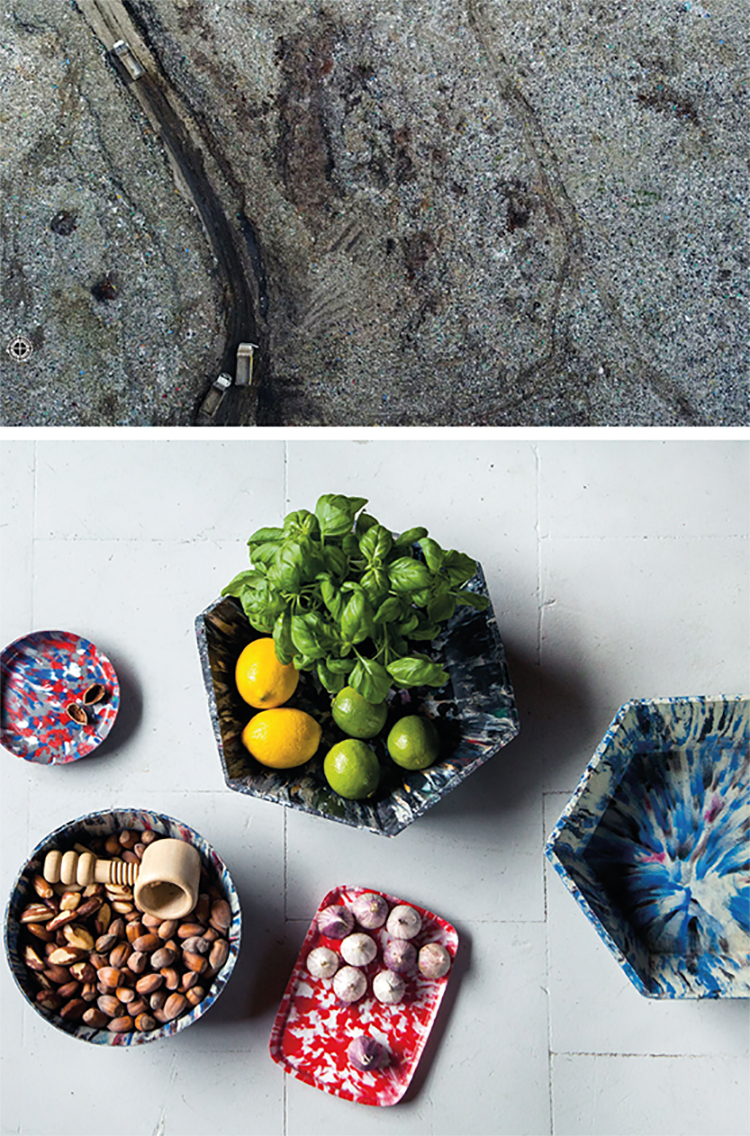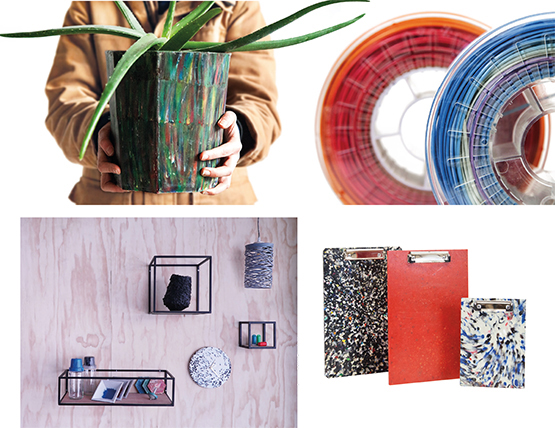A little girl plays among heaps of packaging and plastic waste coming from every corner of the world. She “fishes” for dead fish in a polluted stream, whilst sheep graze on bubblewrap in the fields. She lights a fire with bits of nylon, cooks her supper and then goes to sleep in her room, which is covered with candy wrappings and American stickers she collected from the landfill. We are in the Chinese North-Eastern province of Shandong. Yi-Jie’s home is a small family run factory for plastic recycling, in a district that is entirely devoted to this activity; as often happens in the People’s Republic of China (PRC) that divides entire areas by sectors.

Yi-Jie is the main character of the documentary “Plastic China,” by the director and environmental Journalist Wang Jiuliang. Released in the autumn of 2016, after three years of work and research, the film has toured the world collecting prizes and international awards (in Italy it won first prize at the CinemAmbiente Festival 2017). It has been particularly successful in China, where it caused public indignation, and was subsequently censored by the government, as Wang himself claims. The film highlights a practice that over the years has become a true environmental and social scourge for the PRC: the import of foreign recycling waste. In 2016 the numbers reached 50 million tonnes of imported recoverable materials, including paper, iron, steel and other metals. 7.3 million tonnes of this is plastic, almost half of which come from Europe and the rest from the United States, Korea and Japan. “To date, China has welcomed around 56% of the plastic that has been thrown away by the rest of the world,” points out Liu Hua, a Chinese activist for Greenpeace East Asia.
After becoming the planet’s factory, China has now quite quickly turned into its landfill. However, China no longer wants to play this part. The image of little girls running on mountains of imported rubbish doesn’t go down well with President Xi Jinping’s glossy green New Deal. After all, as Greenpeace itself confirms, the issue of plastic pollution has been a priority in Beijing’s political agenda for a while. “The country – explains Liu Hua – must already deal with the growing amount of waste produced at home, 3,5 million tonnes of which are thrown into the sea every year. A number that will continue to increase, considering that the pro capita consumption of plastic in China has skyrocketed in the last years, thanks to the growth of consumption powered by the Middle Class, and to the expansion of food and drink home delivery services.”

The Sword of the Nation and the New Standard
Therefore, it took only a few months to approve new regulatory measures that put stringent limits on the import of waste materials from abroad through stricter standards. The restrictions, that have been communicated to the World Trade Organization, include 24 of the most polluting types of solid waste, including domestic plastic products, non-differentiated or mixed paper, textile waste and various other types of waste. At the end of April, the Beijing Ministry of the Environment announced that new restrictions will be added in December 2018 and December 2019, in the context of a progressive plan to “clean” the flows of waste reaching Chinese soil. The ban on household and municipal waste came into force on January 1st 2018, whereas the new standards for impurities in industrial waste were implemented on March 1st.“Actually, the main problem – adds Liu – especially for what concerns plastic, is that imported materials were often low quality and of little value”: highly “impure,” and therefore more polluting.
In other cases, the real problem lies in the intrinsic characteristics of the materials. Such is the case of pvc, that releases dioxin into the environment. Then there is the problem of composite waste, including bonded paper, plastic and aluminium materials, that are very difficult to recycle; especially when taking into consideration the low level of technologcy in family run plants like the one that is portrayed in Wang Jiuliang’s film. It must be stressed that for decades international quality standards (those already in force) have not been a main concern of the Chinese market, especially when importing waste from abroad; and of course the same can be said of the Countries exporting that very waste. Rapid industrial growth in the PRC required raw materials and there was no time to split hairs. When production increased, China found itself with a bigger domestic stock of materials to be recycled. At the same time it had to face growing pressure from public opinion on the issue of industrial pollution. Two aspects that, already at the beginning of 2017, brought Beijing to introduce more stringent rules on containers carrying waste from foreign countries, that were then carefully (and theatrically) inspected, making use of x-ray technologies to guarantee compliance with quality standards.

The National Sword, as the control campaign has been named with the usual rhetorical aplomb, struck international exports. Within a few months this developed into the far more stringent restrictions that were then announced to the WTO. Therefore, China put itself first, and as usual it did so without wasting time: from one day to the next, wrong-footing the international community and the global system of disposal and recycling, that has always (and excessively) relied on the possibility of sending its waste to the Far East. “The new thresholds on the levels of impurity are so low that they often act as an actual import ban” declared Arnaud Brunet, general manager of the Bureau of International Recycling (the international federation for the recycling industries based in Brussels), a few months ago. When interviewed by Renewable Matter in February, Brunet explained that: “Initially, China wanted to set the threshold at 0,3%, but then agreed to increase it to 0,5% for almost all materials.” BIR had also asked for a 5-year transition period to allow a gradual adjustment of the international system “but this request hasn’t been taken into account at all.”
First consequences
What will happen now? The first foregone consequence is a decrease in the import of waste materials (or exports, depending on the point of view). In December, Brunet announced an expected 80% decrease in plastic waste export to the PRC. However, what initially seemed like a catastrophic prediction is proving to be an optimistic one, considering the data published by Beijing in April. If during the first three months of 2018 a shy and strictly monitored flow of plastic waste was still crossing Chinese borders (about 10.000 tonnes, according to the Ministry of the Environment), after the entry into force of the new standards in March the government has triumphantly announced that plastic waste import has been reduced to zero.
First of all, this will impact the Chinese recycling industry. Liu Hua explains that “It’s likely that the whole sector will face an increase in the cost of waste, and at the same time it will have to deal with a shortage of raw materials. Small, family run plants will suffer the most from the stress caused by this change.” The same stress will hit small and medium enterprises worldwide (and not only them) if, as Brunet fears, “a solution isn’t found quickly.”

Precious Plastic: is the future of recycling open source?
Plastic is precious. This is not an obvious thing to state, since its market value (that made it the disposable material par excellence) does not reflect its extraordinary characteristics of resistance, durability and versatility, as well as its environmental costs that make it openly unsustainable.
Therefore, the 30 year old Dutch designer Dave Hakkens, named his ambitious project to encourage do-it-yourself recycling of the worlds most wasted and misused material: “Precious Plastic.” His mission is to give everyone access to tools for recovering waste plastic and creating various objects to sell (tableware, pots, tiles and even climbing holds).
This idea was born in 2013 and has its roots in the makers’ world, feeding on the culture of bottom-up sharing and innovation that is characteristic of digital artisans. However, if 3D printers, considered the hallmark object of the makers’ global community, need special and often expansive raw materials; Hakkens’ machines are created from a circular economy perspective, making use of what is already available.
In less than 30 square meters, the small “Precious Plastic” workshops contain the entire recovery and processing system, and can be installed anywhere. Moreover, they have an educational and narrative function: they summarise and show the whole recycling process, which is usually confined in structures that are not accessible to the public, and in this way normalise the process and make it available to everybody.
There are basically three kinds of machines: shredders, that grind plastic waste; machines that warm up the material, turning it into a malleable paste; and extruders that are used to create shapes with a constant section, an example of which could be a pipe.
All the schemes and tutorials to build these machines are open source and available on the project’s website. There’s also a forum to ask for help and advice, and an on-line platform that shows products or parts of machines that have already been built. Finally, it offers an interactive map that localises the members of the community all over the world. Having started in Holland, there are now hundreds of members coming from countries such as South Korea, New Zealand, Mexico, Kenya and Thailand. A prèt-à-porter technology, low cost and potentially replicable by everybody. Hakkens’ vision, if adopted in developing countries, could become an important element for the future of recycling.
Alternative routes
For some the solution lies in the search for alternative markets. The plastic route is already changing, heading towards South-East Asia, where the Chinese manufacturing industry is relocating. BIR’s most recent estimates, published in January by the Thomson Reuters Foundation, seem to confirm this trend. For example, annual imports of plastic waste in Malaysia skyrocketed from 288,000 tonnes in 2016 to 450-500,000 tonnes in 2017. During the same period imports have grown by 62% in Vietnam, by 65% in Indonesia and by 117% in Thailand.
Brunet confirms that “In fact, these countries are expected to absorb at least part of the volume of waste materials that were once destined to China, but in any case they are very far off its capacity.” The question remains as to whether they are sufficiently equipped to control and manage the plastic waste flux (some illegal) that presumably will flood these countries. Some are already fearing similar if not worst problems than those that have been experienced by China.
“In any case – says Liu Hua – relocating the problem is not going to solve it. Moving waste to another part of the world can’t conceal the fact that we are producing much more plastic than the planet can cope with. The Chinese ban could be a good starting point to reorganise our model of consumption towards a decrease in waste of resources.”

Speed up circularity
Europe aims to rethink the entire production and consumption system in an increasingly circular perspective. At least this is the intention, that has been reaffirmed in the recent “Strategy for plastic in the circular economy,” where, willing or not, the Commission had to take Chinese decisions into account.
Every year 26 million tonnes of plastic waste are generated in the European Union, and at the present time less than 30% is collected for recycling. More or less half of this 30% (around 7,7 million tonnes) is sent abroad, mostly to China, where 85% of European exported plastic waste ends. Now, the situation will have to change and as the authors of the EU document write, with a certain dose of optimism, “this could create opportunities for the European recycling industry.”

The problem, which is not an irrelevant one, is the low demand for recycled plastic by European industry. The Directive states that: “The use of recycled materials in new products is low, and often limited to low-value or niche applications. The uncertainty over market opportunities and profitability keeps investments at a distance. Yet these investments are essential for the growth of Europe recycling capacities, and to promote innovation.” However, “the shrinking of the export routes for recyclable waste will make the development of a European market for recycled plastic even more urgent.”
The Dragon’s fast moves could force the Old Continent into a change of pace.
“Plastic China,” Wang Jiuliang, www.youtube.com/watch?v=v0Kif9cugQ0
Immages: ©2016 Dave Hakkens



